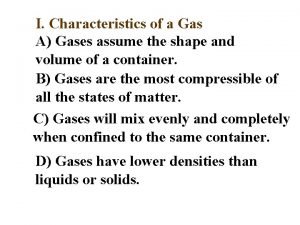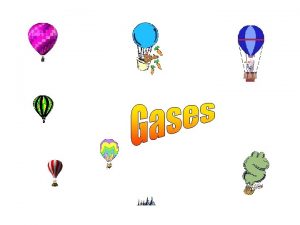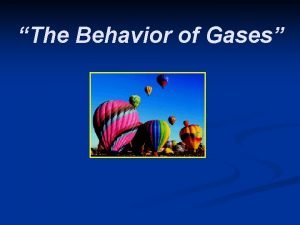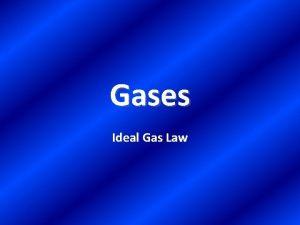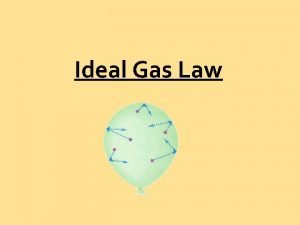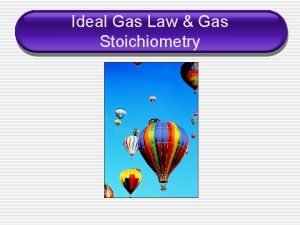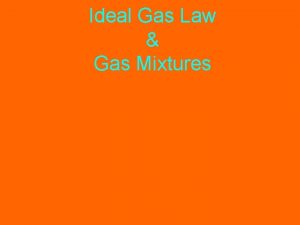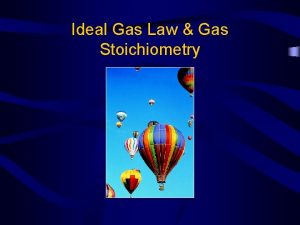Gases Ideal Gas Law Ideal Gas Law An








- Slides: 8

Gases Ideal Gas Law

Ideal Gas Law • An ideal gas is defined as one in which all collisions between atoms or molecules are perfectly elastic and in which there are no intermolecular attractive forces. • Think of a gas as a collection of perfectly hard spheres which collide but which otherwise do not interact with each other. Like Billiards!

Ideal Gas Law • An ideal gas can be characterized by three variables: absolute pressure (P), volume (V), and absolute temperature (T). • The relationship between them may be deduced from kinetic molecular theory.

Kinetic Molecular Theory • The gas consists of very small particles, all with non-zero mass. • These molecules are in constant, random motion. The rapidly moving particles constantly collide with the walls of the container. • The collisions of gas particles with the walls of the container holding them are perfectly elastic. • The interactions among molecules are negligible. They exert no forces on one another except during collisions.

Exceptions to the Ideal Gas Law • at low temperatures (close to 0 K) – gas molecules have less kinetic energy (move around less) so they do attract each other • at high pressures (like many, many atm) – gas molecules are forced closer together so that the volume of the gas molecules becomes significant compared to the volume the gas occupies

Symbolic Representation Ideal Gas Law PV = n. RT • n = number of moles • R = universal gas constant = 0. 0821 L*atm/mol*K

Ideal Gas Law Example #1 What volume is needed to store 0. 050 moles of helium gas at 2. 00 atm and 400 K?

Ideal Gas Law Example #2 What pressure will be exerted by 20. 16 g of hydrogen gas in a 7. 5 L cylinder at 20 o. C?






